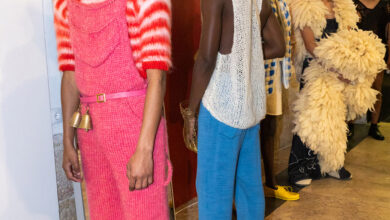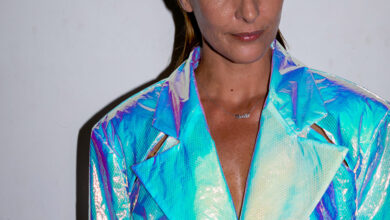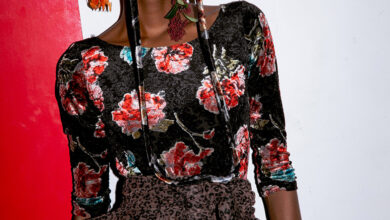SAN FRANCISCO'S AAU 2011 GRADUATION FASHION SHOW

Zoot reviews the collections of the graduates from the School of Fashion at San Francisco’s Academy of Art University.
Text by Anna Battista
In the last few years there has been a manifold increase in the number of colleges and universities offering fashion design courses. While for young students with a genuine passion in this discipline the main problem is finding the best course among hundreds, the fashion media seem to stand in front of a different dilemma, mainly relating to the graduates.

With so many institutions producing thousands of graduates a year (we’re probably near to saturation point…), at times it proves rather difficult to evaluate the real potential of the students.
Besides, it can’t be denied that some of the graduate catwalk shows organised by the most famous institutions are based on showpieces that catch the eye of the editors and easily end up in the pages of glossy magazines since they show a tremendous creative urgency. Yet at times what’s missing during such shows is a coherent balance between saleable garments and grand showpieces.

The recent graduate show at San Francisco’s Academy of Art University’s School of Fashion interestingly proved instead that a good balance between these two aspects can actually be achieved.
Simply known as The Academy amongst the locals, thanks to its graduates the university – that currently counts over 17,000 students – has managed in the last few years to help San Francisco shaking off itself the stereotypical label of laid-back town with not much style, but with a great coffee-shop culture.

Considered as the best runway presentation in the Bay Area, the BFA Fashion Show put on by The Academy featured this year 16 collections by 22 students graduating in areas of study going from men and women’s wear to accessories, knitwear and textiles.


Different graduates excelled for different reasons: Inez-Marie Galvez’s black leather and fabric dresses characterised by sculptural shapes were enriched by Rachele Barretto’s jewellery inspired by Polynesian tattoos based on the colours and nuances of Oceania; Jannika Lilja focused on a mix of androgyny and beauty in decay using layers of fabrics as metaphors for years of life passing by, while Peter Nguyen (one of the recipient of the Studio Berçot internship) opted for a minimalist approach and, moving from menswear tailoring, created a collection mainly based on neutral colours.



Wallpaper motifs from the 1950s and ‘60s inspired instead Darrin George’s textiles employed by Lauren Haut in her collection that included versatile separates and dresses with cocooning shapes in contrastingly pleasant shades of lime, turquoise and salmon, with a couple of showpieces characterised by exaggerated shoulder silhouettes.



Art proved a strong inspiration for young designers going from Juhyun Vivi Park who combined workwear with Mark Rothko’s paintings coming up with a series of functional linen garments; Lucio Fontana’s slashes reappeared as prints on Cynthia Tran’s long evening gowns made with textiles designed by Kassie Moody based on Ludwig Bemelmans’ Madeline books.


Lisa Relth (recipient of the Ecole de la Chambre Syndicale de la Couture Parisienne internship) turned instead to the glowingly dark nuances of 16th century surrealistic painter Giuseppe Arcimboldo, famous for his portraits made with fruit, vegetables and flowers.


Classic tailoring was reinvented in Donna Dong Zhong’s deconstructed jackets that moved from the zoot suit.


There was also an interesting emphasis on science in womenswear or accessories collections that mainly employed plastic and synthetic materials: Margaret Yoha’s fused Jean-Jacques Rousseau’s noble savage and Henri Rousseau’s jungle paintings in her green and transparent latex trousers, shirts and tops, working this material as if it were leather and creating palm elements, leaves and wave-like motifs; mould-making techniques led Christina Monic Chavex to experiment with a line of accessories based on rubber.


Drew Williams (another recipient of the Ecole de la Chambre Syndicale de la Couture Parisienne internship) mixed instead Rudi Gernreich, medical attire and agarose gel electrophoresis, a method employed to separate proteins by charge/size and in biochemistry and molecular biology to separate DNA and RNA fragments by length, creating dresses, tops and sleeveless jackets that seemed to imitate the consistency and colours of agarose ‘slab’ gel prior to UV illumination and with UV illumination.


Medical inspirations also appeared in menswear: anatomy was behind Ashley J Jung’s deconstructed and reconstructed pieces, while Stephanie Duarte looked instead at modern vagabonds and Fayrouz Abi Assi mixed American depression with the tones and colours of Arab desert dwellers, a rather unlikely combination that proved interesting especially when applied to tailored coats.



The knitwear graduates reserved some interesting surprises, proving that woollen separates can be practical, but also stylish and elegant: while Baron A. Davis looked at Dadaism and industrial art, Maggie Mo Luo won an internship at Sonia Rykiel thanks to a versatile collection in beautiful shades of ocean blue with sparkling sequins imitating the effects of light under water.


Many graduates coming out of fashion design courses often stick to the idea of risking it all by starting their own label in a world where there are already too many fashion houses and brands, but with very few financial backers left.
It’s often the case that the San Francisco’s Academy of Art graduates first land jobs in companies such as jeans manufacturers and minor fashion labels, hoping one day to become established fashion designers.
Time will tell if they will win the challenge and manage to start and sustain their own house or label in this highly competitive market. For the time being, it looks like the Academy of Art’s graduates are amongst the ones we should definitely keep an eye on.






